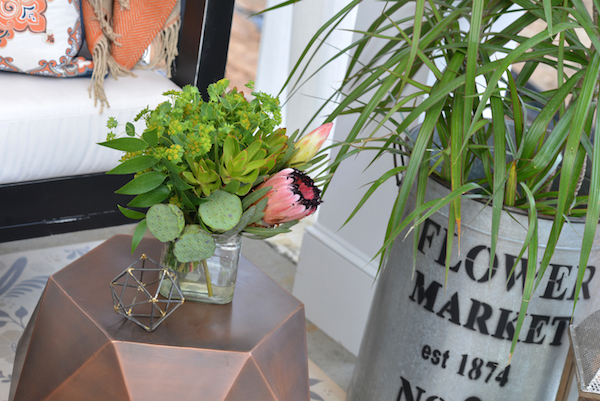9 Must-Have Houseplants for Fresh, Clean Air
It’s long been known that keeping plants indoors can improve your air quality and brighten just about any room, but which plants are right for your home?
Some houseplants are more efficient (and harder to kill) than others, so it makes sense to weigh your gardening ability, your needs and your sense of style when you’re choosing what’s right for you.
Houseplants with Flair
If you like bold, beautiful plants, these are for you:
· Aloe. Aloe is an easy-to-grow houseplant that adores plenty of sunlight. It helps remove byproducts of chemical-based cleaners from your home, which makes it ideal for a sunny kitchen window, breakfast nook or bathroom countertop. As an added bonus, the gel inside the plant can help heal burns, scrapes and cuts.
· Red-edged dracaena. This snazzy plant features bright, green leaves with vibrant red outlines, and it works hard to consume xylene, formaldehyde and trichloroethylene from your indoor space.
· Warneck dracaena. Care for this fantastic plant properly and you might have a 12-foot mammoth on your hands (just imagine how clean your indoor air will be then). An added bonus: it doesn’t require direct sunlight and clears out formaldehyde, toluene and more.
Hard-to-Kill Houseplants
Got a black thumb of death? These houseplants can make you look like a professional horticulturist:
· Spider plant. The spider plant doesn’t need tons of water or direct sunlight. Instead, keep their soil moist and stash them in indirect sunlight. This flowering plant devours toxins like carbon monoxide, benzene and formaldehyde.
· Snake plant. This one, also known as mother-in-law’s tongue, is perfect for bathrooms with small windows because it doesn’t require lots of direct sunlight. It clears out formaldehyde (a common component in cleaning products and toiletries) and a handful of other unwanted chemicals.
· English ivy. This bathroom-ready plant helps purify the air in small, enclosed spaces. How does it work? You probably don’t want to know – just be aware that it’s hardy and can thrive while it improves your bathroom air quality.
Fragile, but Extremely Efficient Air-Purifying Houseplants
You don’t have to be an expert gardener, but you do have to pay attention to these fragile-but-efficient houseplants:
· Chrysanthemum. Chrysanthemum tackles benzene and carbon dioxide, as well as a few more, which makes it perfect for a living room, a home office or a dining room. The catch: it needs plenty of bright, direct sunlight and some fresh air.
· Weeping fig. This one’s also known as a ficus tree, and it can power through the chemicals that come off your furniture and out of your carpet or rugs (such as formaldehyde, benzene and trichloroethylene). It needs lots of indirect, bright sunlight and when it comes to watering, each one is different – you’ll have to play this tricky tree by ear to perfect your technique.
· Azalea. Azaleas need cooler temperatures (between 60 and 65 degrees F) to thrive, but they’re powerful warriors in the fight against formaldehyde. They also require a lot of bright sunlight, though, so they’re a little bit difficult to maintain.
· Heart-leaf philodendron. While this climbing vine is a pollutant-consuming powerhouse, its leaves are toxic when eaten. This one’s a bad idea if you have kids or pets; if you don’t, let it chomp up all the impurities in your air and breathe a sigh of relief.






